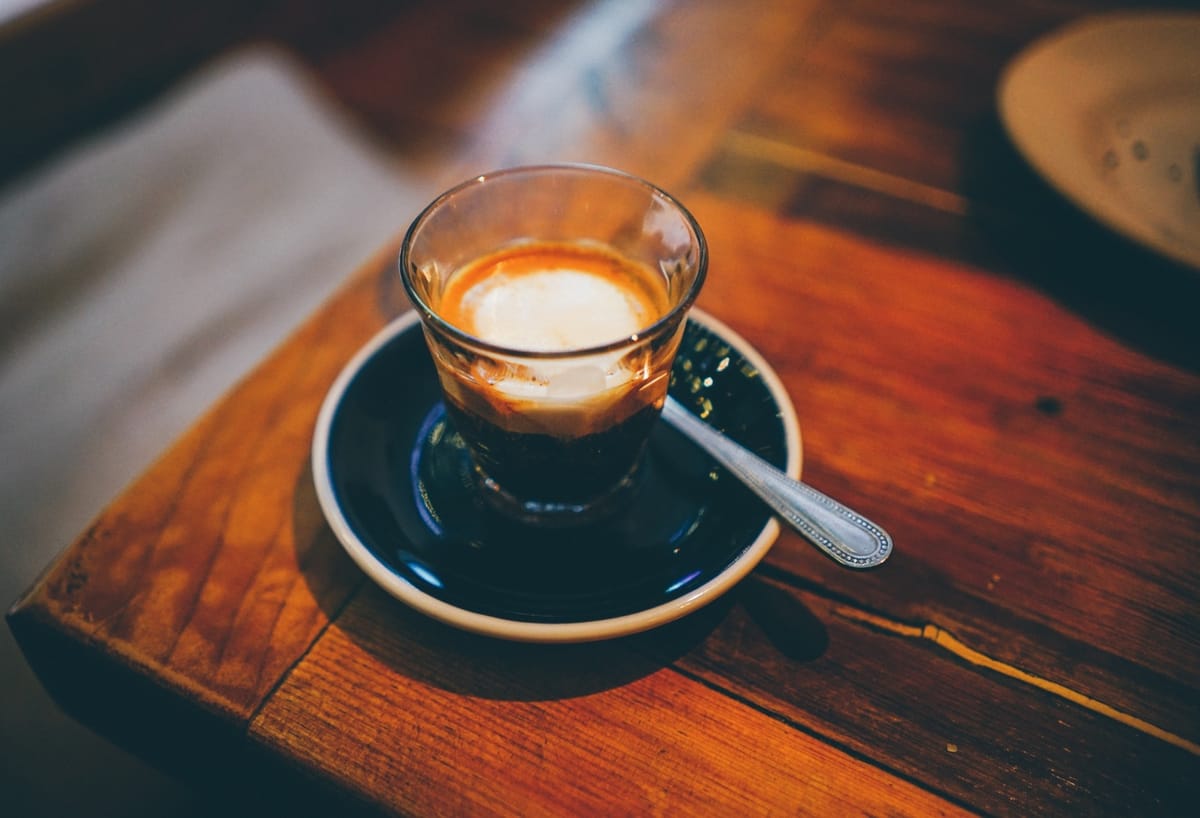Espresso milk drinks are starting to all be the same
It's fine, really. Really. But I still have Opinions.

I've been noticing this trend for a while: order a cappuccino, a caffé latte, and a flat white at a specialty coffee place. Chances are, you'll get three drinks that are nearly identical—in some shops, they really are identical. This is a shame, because the different drinks really do present different coffee experiences, and they should be notably different.
Some people are obsessed with these drinks being "traditional" or "authentic"; while that can be interesting to learn about, I don't think it's a bad thing that what defines a particular drink can shift and vary from café to café. But I do think it's a bad thing that the different drinks are losing their character.
So here's what I think makes each drink unique, and how I'd approach them if I ran my own coffee shop. As always, the goal with coffee is to enjoy what you enjoy, so this isn't me telling you how to drink coffee! If you're the SparkNotes type, you can go straight to the TL;DR.
Cappuccino
Originally "coffee made the color of the Capuchin monks' robes", a cappuccino should be a drink where the milk foam is prominent. It should not be overly milky—liquid milk and foam together shouldn't have much more than twice the volume of the espresso. If you can't scoop up a finger full of foam, something went very wrong with your cappuccino!
If I see "latte art" on your cappuccino, I'm either about to be very impressed (because art with that much foam is hard) or very disappointed (because you didn't actually make anywhere near enough foam). Cappuccini—yes, that's the right plural form—should give you the subtle sweetness that comes from the sugars in milk, and from the fat mitigating some of the coffee's strongest notes. And they should let you experience an airy milk foam that picks up hints of the coffee as you consume it. It's a textural experience.
Caffé latte
This one I'm pretty relaxed about: it's really just espresso and hot milk, the Italian café au lait. If you wanted to be traditional, you'd heat the milk in a pan before adding it to strong coffee; but making a caffé latte with the espresso steamer has a both a long history and the fact that it's overwhelmingly the dominant practice today to recommend it.
Even so, the history suggests something important: a caffé latte has milk as the hero, and should not be excessively foamy. Modern takes on the drink bring the texture benefits of "microfoam" to the caffé latte by allowing a bit more to form than is strictly necessary, and then thoroughly integrating that foam into the steamed milk. I'd expect a caffé latte to have 3–4 times the amount of milk as espresso (more than that, and we're getting into the modern latte macchiato territory).
This is the domain of latte art, as it lets a barista or baristo show off the quality of the espresso, the milk, and the art of creating the integrated foam with a creative pour.
Quick reminder: if you order "a latte" rather than a "caffé latte", it's entirely possible you'll get a nice cold glass of milk (since latte just means "milk"). If this happens in the US, it's pure snark from the barista—but in Italy and some other parts of the world, it's your own fault.
Flat white
One of my favorites, it's also the subject of both intense snobbery and heated debates over provenance, with New Zealand and Australia both claiming its invention. But for all that, it really is just a caffé latte with a lot less milk (around 2–2.5 times the volume of espresso). I'd argue that the flat white is at it's best when it has even less foam than its larger cousin, and I prefer to serve it to others without pouring any art more complex than a simple "monk's head" (though that is personal preference only).
For me, this is one of the most delightful options for a mid-morning coffee. The high coffee-to-milk ratio lets the espresso flavors shine, while still providing a much-appreciated buffer to a stomach that hasn't yet had a sizable meal.
Bonus round: macchiato, cortado, espresso con panna
These much-smaller drinks are almost never confused with those above, but also seem to have an unreasonable variation. They're also some of my favorite ways to enjoy an espresso in the afternoon, which too much milk is less welcome.
A macchiato is one of the most frustrating things to order in the US, thanks to large chains wildly reinterpreting it. It should be an espresso (make it a double!) with just a splash of hot milk (0.5 times the espresso volume, or less) and a dot of foam to "mark" it. Almost every shop I've been to puts far too much milk into a macchiato, bringing it into cortado territory. And I've learned to ask questions at a new café, because quite a few will serve a "starbucks macchiato", which is a latte macchiato—a glass of hot milk with a ristretto coffee shot in it.
It's bigger brother is the cortado, which comes from the coffee traditions of the Spanish-speaking world. It should be close to equal parts espresso and milk, with a notable head of foam (though not nearly as much as a cappuccino). A gibraltar is the same drink, served in a gibraltar cocktail glass; fight me. A cortado is my favorite drink to add subtle flavors to for a mid-afternoon treat. A drizzle of honey or caramel in the cup before adding the shot makes for a delightfully sweet treat.
And with espresso con panna, we return to the Italian tradition. Another way to have a delightful little treat, it is a double shot of espresso topped with fresh whipped cream. If the whipped cream came from a store-bought can, send it back and order something else; it's the hero here, and it should be quality. Some coffee snobs find this beverage sacrilegious; feel free to garnish yours with their salty tears and a drizzle of caramel sauce.
TL;DR
I really like coffee, and while no one should snob over it, I still have Opinions about the essential makeup of common drinks, because I don't like how all of the milky drinks seem to be merging into a slightly-foamier caffé latte.
- Cappucino is espresso with very foamy milk; avoid being too milky.
- Caffé latte is a big, milky drink with a little foam that's well-integrated into the milk. A latte is just a glass of milk, though most shops in the US (at least) will know what you meant.
- Flat white is a caffé latte with a lot less milk and even less of it is foam. It's also a fun way to start a fight between Aussies and New Zealanders, who will then gang up on the coffee snobs said fight attracts.
- Macchiato, cortado, and espresso con panna are smaller drinks that seem to be particularly fertile ground for snobbery.
